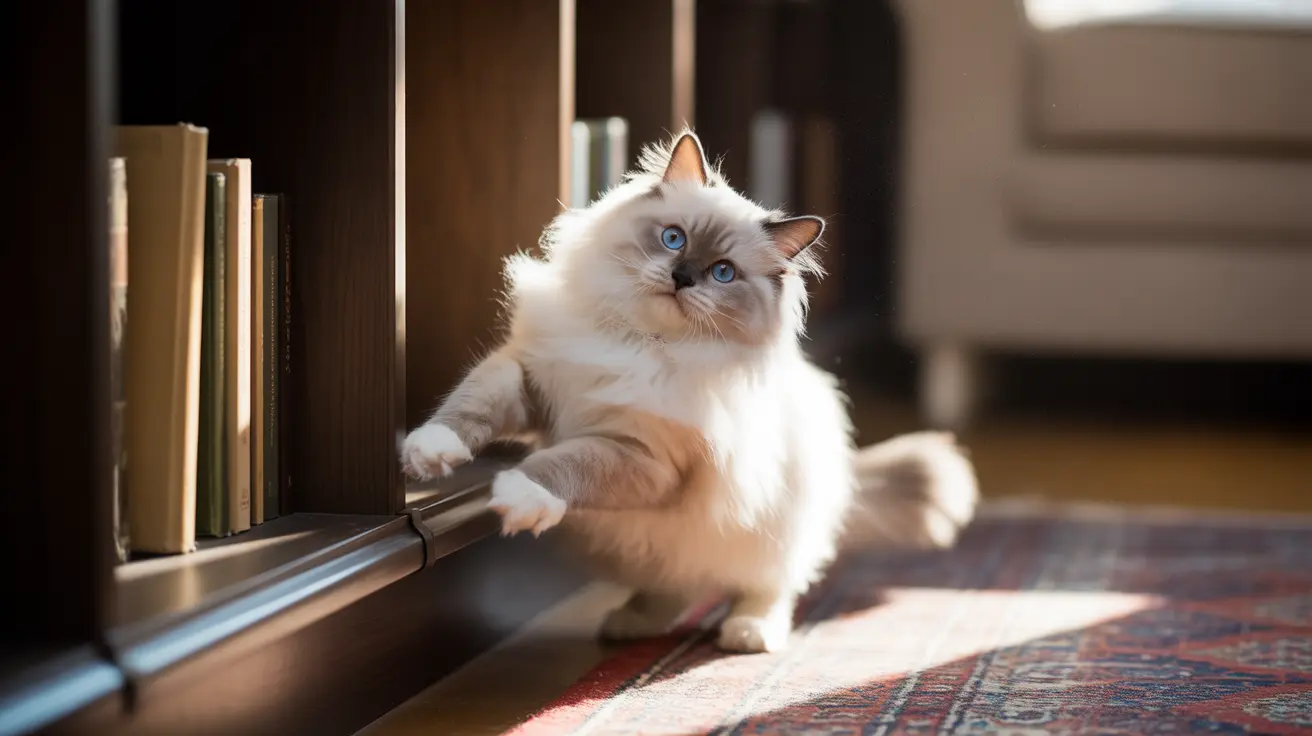Introduction
Have you ever watched your graceful feline companion suddenly stumble, miss a jump, or appear uncoordinated? The question "why is my cat so clumsy?" is more common than you might think. While cats are naturally agile creatures, various factors can affect their coordination and balance, ranging from harmless developmental stages to more serious medical conditions.
Understanding the difference between normal occasional clumsiness and concerning symptoms is crucial for every cat owner. This comprehensive guide will explore the various causes of feline clumsiness and help you determine when to seek veterinary attention.
Normal Clumsiness vs. Concerning Signs
Cats can display clumsy behavior for various normal reasons. Kittens, particularly those under 6 weeks old, naturally appear uncoordinated as they develop their motor skills. Senior cats may also show occasional clumsiness due to age-related changes in joint mobility and vision.
However, sudden or persistent clumsiness, especially when accompanied by other symptoms, may indicate an underlying health issue. Understanding these distinctions can help you make informed decisions about your cat's health.
Common Medical Causes of Feline Clumsiness
Cerebellar Hypoplasia (CH)
Also known as "wobbly cat syndrome," cerebellar hypoplasia is a neurological condition affecting the part of the brain responsible for coordination. Cats with CH may display jerky movements and have difficulty walking in straight lines, but the condition isn't progressive or painful.
Vestibular Disease
This condition affects the inner ear and balance centers of the brain, causing sudden loss of coordination, head tilting, and disorientation. While often alarming to witness, many cases of vestibular disease can improve with proper treatment.
Neurological Conditions
Various neurological issues can cause clumsiness, including:
- Brain injuries or tumors
- Spinal cord problems
- Nerve damage
- Inflammatory conditions
Environmental Factors Affecting Cat Coordination
Sometimes, clumsiness isn't medical at all. Environmental factors that can affect your cat's coordination include:
- Slippery flooring
- Poor lighting
- Cluttered spaces
- Obesity
- Changes in furniture arrangement
When to Seek Veterinary Care
Contact your veterinarian immediately if you notice:
- Sudden onset of severe clumsiness
- Persistent stumbling or falling
- Head tilting
- Changes in behavior or appetite
- Difficulty walking or jumping
- Signs of pain or distress
Supporting Your Clumsy Cat
Create a safer environment for your cat by:
- Installing non-slip mats
- Providing easy access to necessities
- Maintaining consistent furniture arrangements
- Managing weight through proper diet and exercise
- Regular veterinary check-ups
Frequently Asked Questions
Why is my cat suddenly so clumsy and losing balance?
Sudden clumsiness or loss of balance could indicate various conditions, from minor ear infections to more serious neurological issues. If the change is sudden, consult your veterinarian immediately for proper diagnosis and treatment.
Could my kitten's clumsiness be a sign of cerebellar hypoplasia or "wobbly cat syndrome"?
Yes, cerebellar hypoplasia is typically noticed when kittens begin walking. Signs include wobbling, head tremors, and uncoordinated movements. While incurable, cats with CH can live happy, full lives with appropriate care.
What health conditions cause persistent clumsiness or stumbling in adult cats?
Persistent clumsiness in adult cats may be caused by vestibular disease, neurological conditions, arthritis, vision problems, or inner ear infections. A veterinary examination is necessary for accurate diagnosis.
How can I tell if my cat's clumsiness is normal aging or a veterinary emergency?
Normal age-related clumsiness develops gradually and typically involves minor coordination issues. Emergency situations involve sudden onset, severe symptoms, or additional signs like vomiting or behavioral changes.
What can I do at home to help a clumsy cat stay safe and comfortable?
Provide non-slip surfaces, maintain clear pathways, ensure good lighting, and create easy access to necessities. Remove potential hazards and consider installing ramps or steps to help with mobility.
Conclusion
While occasional clumsiness in cats is normal, persistent or sudden coordination issues warrant attention. By understanding the various causes and signs of concerning clumsiness, you can better advocate for your cat's health and well-being. Remember that many conditions causing clumsiness are manageable with proper veterinary care and environmental modifications.






